News
Hydrosol promotes stabilising, texturing systems for sugar reduction
22 Aug 2018“With our new stabilising and texturing systems we can compensate for lower sugar content,” said Katharina Schäfer, Product Manager Dairy & Deli Foods at Hydrosol.

Sugar reduction in foods is a topic of great interest around the world, notes Hydrosol. In Germany, the company notes, retailers are advertising the lower sugar content of their house brands. In Great Britain, since April of this year there has been a sugar tax on soft drinks. In other European as well as Latin American countries, nutrition traffic lights on packaging alert consumers to the sugar percentage in foods. In India, regulation to this effect is currently being finalised.
The main driver for all this activity, according to Hydrosol, is the ominous increase in obesity on all continents, that is increasingly being linked to high sugar consumption. It is therefore no surprise that the number of sugar-reduced or sugar-free products is growing rapidly around the world. In just the past five years the number of product launches has more than doubled, from just under 5,000 in 2012 to over 10,000 in 2017 worldwide. Soft drinks and dairy products are among the fastest-growing categories. This growth is set to continue, as obesity is a key risk factor for cardiovascular diseases that are a major strain on healthcare systems, and more and more governments are devoting attention to the issue. The new need is “low sugar,” and new solutions from retailers and industry are in higher demand than ever. And here is where the challenge lies, Hydrosol believes. From a technological point of view sugar has many desirable properties. It binds water, acts as a preservative, and is very readily soluble. Most importantly, it gives products flavour, body, texture and a pleasant mouth feel. Merely replacing sugar with intensive chemical sweeteners or alternative sweeteners is generally not a viable alternative for food manufacturers from a technical standpoint. Instead, they try to replicate the many functions of sucrose through combinations of other ingredients. This is just what the new stabilising and texturing systems from Hydrosol accomplish. In application testing, Hydrosol technologists and scientists have determined the optimum interplay of individual components in various food products. The result is individual ingredient combinations for foods like yogurt, drinking yogurt, mixed milk drinks and pudding, as well as for fruity refreshing drinks, energy drinks, ketchup and plant-based whipping creams. “With our new stabilising and texturing systems we can compensate for lower sugar content,” reports Katharina Schäfer, Product Manager Dairy & Deli Foods at Hydrosol. “The targeted combination of different individual components gives each product the desired qualities. Hydrocolloids and starch give stability, body and a pleasing texture, while special plant fibres improve mouth feel.” A positive side effect is that if the fibre content is high enough, it can be marked on the product as an added health feature. In order to get the requisite sweetness, depending on customer wishes Hydrosol uses low-cost conventional sweeteners or raw materials like stevia, which has a positive image with consumers. Natural flavourings round out the flavour profile. “Our sister company OlbrichtArom even offers a ‘sugar booster’ especially for sugar-reduced products. This natural flavouring amplifies the delicate sweetness in the final product without affecting its characteristic flavour,” explains Schäfer. Hydrosol’s new functional systems enable different sugar contents as desired, from sugar-reduced to sugar-free. “A reduction by 30 to 50% is relatively easy for us to achieve in most products. We follow European food law,” says Schäfer. This states that foods and beverages can be labelled as “reduced sugar” if they have at least 30” less sugar than comparable products, as long as calorie content is not higher than comparable products. For labelling as “low sugar” the consistency is the determining factor. Solid foods like yogurt can contain no more than 5 g sugar per 100 g food. For milk beverages, soft drinks and other liquids the upper limit is 2.5 g per 100 ml. “Sugar-free” products may not exceed 0.5 g sugar per 100 g or 100 ml.Related news
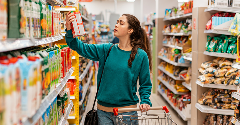
Retail landscape lacks nutritious and affordable food, says ATNi
30 Dec 2025
A rapid increase in modern food retail has given retailers growing influence over consumer diets, according to global non-profit ATNi’s latest assessment.
Read more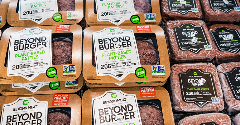
Debate over ban on ‘meaty’ names for plant-based products reaches stalemate
26 Dec 2025
The debate over a ban on plant-based products using “meaty” terms has reached a stalemate, leaving manufacturers in limbo and still facing overhauls to their marketing and packaging.
Read more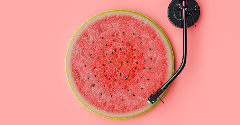
Multi-sensory food and drink products to gain traction in 2026
16 Dec 2025
Trend forecasters predict that sensory elements will play a larger role, helping food and beverage brands differentiate themselves in a competitive market in 2026.
Read more
Big appetite for M&A between European and US food and drink companies
3 Dec 2025
Persistent tariffs on EU food and beverage exports have helped drive record levels of M&A activity between European and US companies this year, according to analysis by ING.
Read more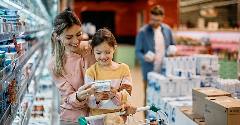
Non-UPF Program extends certification scheme to entire food industry
30 Nov 2025
The Non-UPF Program has extended its certification scheme to the wider food sector, championing a move towards healthier consumption habits.
Read more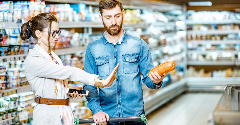
Lancet study links UPFs to chronic disease risk
26 Nov 2025
UPFs are consistently associated with an increased risk of diet-related chronic diseases, according to a comprehensive review of global evidence in The Lancet .
Read more
Concerns swirl around cinnamon’s compliance with EU law
25 Nov 2025
Cinnamon may be a top functional ingredient, but it needs stronger protocols to ensure it meets EU food safety laws and quality standards, say researchers.
Read more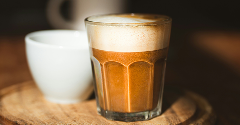
Oat Barista: Innovation for game-changing beverages
20 Nov 2025
Oat Barista is a clean label, sustainable, and innovative drink base specifically designed to create the perfect foam in one single ingredient.
Read more
How younger consumers are redefining ingredient choices and rejecting brand loyalty
18 Nov 2025
Gen Z and millennial consumers’ preferences for transparency, functionality, and purpose are “redefining the very nature of consumption itself”, says SPINS.
Read more
Hybrid formats and flexible positioning to disrupt category norms in 2026
17 Nov 2025
Trend forecasters expect food and drink to move more fluidly across occasions, functions, and formats as consumers seek versatility, novelty, and convenience.
Read more